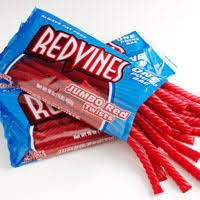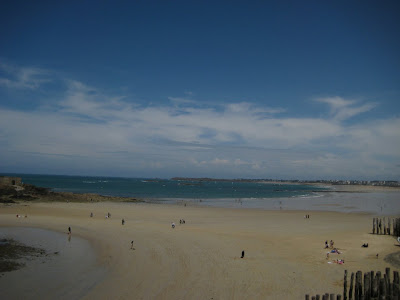This is why I love France... and why I love The Australian!
THE GLOBAL GOURMET: Food writer M.F.K. Fisher's spirit lives on in Burgundy, reports Judith Elen August 01, 2009
Article from: The Australian
AS satisfying as its rich-sounding name, Burgundy in central-eastern France has everything going for it except, perhaps, palm trees.
Stamping ground of the glorious 14th and 15th-century dukes of Burgundy, they -- like the powerful medieval monks -- shaped the region even into the 21st century. Palaces, chateaus and monasteries keep history alive and, now as then, the vines threading the landscape stitch it all together.In the 1984 book Cuisine du Terroir: The Lost Domain of French Cooking, edited by Celine Vence, I read that rabbit with mustard seed, honey, oil and vinegar graced tables in Dijon, now the regional capital, as early as the fourth century. Famed 18th-century gastronome Jean Anthelme Brillat-Savarin was born nearby. And Burgundian wines have been prominent for 2000 years.
There could hardly be a better finishing school for a student in the taste of terroir. It was the training ground a young American, Mary Francis Kennedy Fisher, stumbled upon in 1929, on her way to becoming renowned food writer M.F.K. Fisher.
Coming to Dijon from country California, Fisher fell on Burgundian cuisine and wine with all the fervour of a convert. After a simple meal on the boat-train from Cherbourg to Paris, she wrote: "I recognised myself as new-born, ready at last to live." A 21-year-old bride, she was about to spend the next three years in Burgundy and her life would never be the same.
Tracing her path, I also arrive by rail, now 90 minutes by very fast train (TGV) from Paris's Gare de Lyon. The trip carries me through a landscape of scratchy trees, still bare in the first days of spring. We occasionally pass an antique farmhouse snuggled into the folds of its pastures, its enclosure walls the faded mustard of the earth, or a medieval village clustered around its winding central road. Once in Dijon, I'm at the upper reaches of Burgundy's wine heartland. The leading vineyards are focused in a narrow 60km strip, the Cote d'Or, running south from here and through the second town of the region, Beaune, midway down its length.
Within Dijon's 12th-century core are half-timbered houses, steep russet, brown and mustard mosaic-tiled roofs, and numerous churches, including Notre-Dame, with "the great Jacquemart", the "strange old clock, with hammers and bells and four iron people". It still attracts gazers as it did Fisher. (Her landlady's son was apprenticed to its official timekeeper.)
In the old town's austere streets I find rue du Petit-Potet, where Fisher moved into "two far-from-luxurious rooms" in the pension of Madame Ollagnier. From here she explored Dijon's streets and heritage and the vineyards beyond. She studied French language and art, walking to the nearby Beaux Arts building of the university. But food was her forte.
Fisher was "hypnotised" by her landlady's earthy charisma and dedication to "making something out of nothing". Madame would buy fruits Fisher considered worthless and "we would have them fixed somehow with cream (at half-price because it was souring) and kirsch (bought cheaply because it was not properly stamped and Madame knew too much about the wine merchant's private life). They would be delicious."
From the small, dark cabinet of a kitchen, banked with copper pots and pans, came "the finest meals I have yet eaten", Fisher wrote. "Different from any food I'd ever had." When the developing gourmet moved to her own small apartment in a blue-collar quarter, in a narrow shuttered house above a patisserie at 46 rue Monge, she emerged into the world of hands-on French market life.
She visited les Halles, Dijon's central market, twice a week, discovering "small and succulent" cauliflowers, cheeses, such as "gruyere grated in the market while you watched, in a soft cloudy pile, on to a piece of paper" and "pave de sante", slices of Dijon's peppery spice bread, a recipe brought here by Margaret of Flanders, who married one of the medieval dukes. Cakes of pain d'epices appear everywhere; local chefs serve it with foie gras or cheese.
Little seems to have changed at les Halles. The covered market -- designed by Gustave Eiffel, like a vaulted railway station of lacy blue-painted iron and glass -- opens Tuesdays, Fridays and Saturdays, 8am to midday. Its stalls are laden with the fresh and the handmade. One vendor heralds the arrival of his new-season white asparagus; elsewhere are goose eggs and garlic, terrines, tiny pink radishes, horse flesh, shellfish, deep-coloured berries, tubs of butter, spring wildflowers and cheeses. Citeaux, a creamy, washed-rind cheese with a deep fondant-like crust, soon becomes my favourite. It is handmade with raw cow's milk from the herd of the small community of Cistercian monks at the Abbeye de Citeaux, south of Dijon.
Epoisses is another rare treat, a strong-tasting triple-cream cheese that's on every menu (available, pasteurised, in Australia, for about $90/kg wholesale, according to my Sydney cheese source).
Market bistro DZ'envies, not here in Fisher's day, is a discovery: it's a tiny restaurant separated by potted palms from the merchant traffic at 12 rue Odebert. I settle at a sun-drenched table for an excellent, well-priced lunch. Succulent local specialties -- snails, foie gras, beef, cabillaud -- are framed, rather than obscured, by the influences of Maghreb and Japan.
Fisher records eating "terrines of pate 10 years old under their tight crusts of mildewed fat" and "great odorous bowls of ecrevisses a la nage (crayfish)" and "snipes hung so long they fell from their hooks, roasted, on cushions of toast softened with the paste of their rotted innards and fine brandy."
Don't expect to eat anything so contentious at the numerous restaurants, many Michelin-grade, around Dijon and Beaune today. Snails are perhaps the most challenging dish, tender in red wine or fragrant in butter and garlic. At three Michelin-starred Lamelloise in Chagny, a degustation menu starts with snails three ways: in a small white pot with the traditional butter and garlic; in a potato shell of parsleyed foam; and in a little galette of potato and mushroom.
La gougere, a bite-sized choux pastry puff made with gruyere, the creation of a Parisian chef working here in the 1800s, is ubiquitous with aperitifs. And the aperitif of choice is kir -- creme de cassis and aligote, a local white wine, or cremant de bourgogne, Burgundy's elegant bubbles -- invented by and named after a one-time mayor of Dijon. The most famous product, mustard, has been a specialty since the Romans were here. While Dijon mustard has become a process, Moutarde de Bourgogne, made with mustard seeds grown in Burgundy, local aligote and using traditional methods, is appellation controlled. The small, third-generation family concern, La Moutarderie Fallot, makes it as well as a range of Dijon mustards with herbs, honey, even cassis. Fallot has a museum at its small factory, where visitors can learn how the mustard is made and see ancient tools and equipment.
Fisher's favourite restaurant was Aux Trois Faisans, "a dingy room with spotted carpets" but memorable food, on the semi-circular forecourt opposite the ducal palace in the centre of town. It was upstairs from the more salubrious Le Pre aux Clercs, which had taken over the upper room even in Fisher's day, when she returned for the annual Foire Gastronomique in 1954. Le Pre aux Clercs is now the discreet, freshly lit one-Michelin starred establishment of chef Jean-Pierre Billoux.
The imposing Palais des Ducs de Bourgogne, opposite, includes the vaulted 15th-century ducal kitchens, now a museum, the tombs of the dukes and the square 14th-century Tour Philippe Le Bon, where I climb more than 300 spiralling stone steps to the roof for a spectacular view of the city.
Fisher's other preoccupation here was wine. The Cote d'Or is divided into the northerly Cote de Nuits and the Cote de Beaune in the south, and harbours evocative names such as Gevrey Chambertin, Romanee-Conti, Nuits St-Georges, Pommard, Meursault and Puligny Montrachet. When I arrive in early April, the spring vines are bare, pruned back or newly planted.
Grapes are almost exclusively pinot noir and chardonnay, with some aligote and red gamay, producing, in descending order of grandness, the region's grands crus, premiers crus, villages appellations and regional appellations wines. Drive, cycle or walk through a trail of tiny villages, all with memorable names that echo the famous domaines and labels.
My Vineatours guide, Brigitte Cabaret, has studied the wines of the region and she introduces me to Julien Wallerand at Caveau Puligny-Montrachet, established in the town of Puligny-Montrachet by Julian's father, master sommelier Jean-Claude Wallerand. Here you can taste and buy the very best of the region. With 4000 bottles in the cellar, from 1959 to the new vintage, Julian knows vineyard history and developments; this is an education that is a pleasure at every sip.
 Used to be that you had to order your American candy fix from specialist shops online. But now, not so. There are a plethora of places in Brisbane now that stock classic US chocolates and candies, like Junior Mints (Seinfeld!), Hershey's (although they've been here for a while), Reese's Pieces, Butterfinger, Almond Joy , Twizzlers, Red Vines and so on.
Used to be that you had to order your American candy fix from specialist shops online. But now, not so. There are a plethora of places in Brisbane now that stock classic US chocolates and candies, like Junior Mints (Seinfeld!), Hershey's (although they've been here for a while), Reese's Pieces, Butterfinger, Almond Joy , Twizzlers, Red Vines and so on.


























